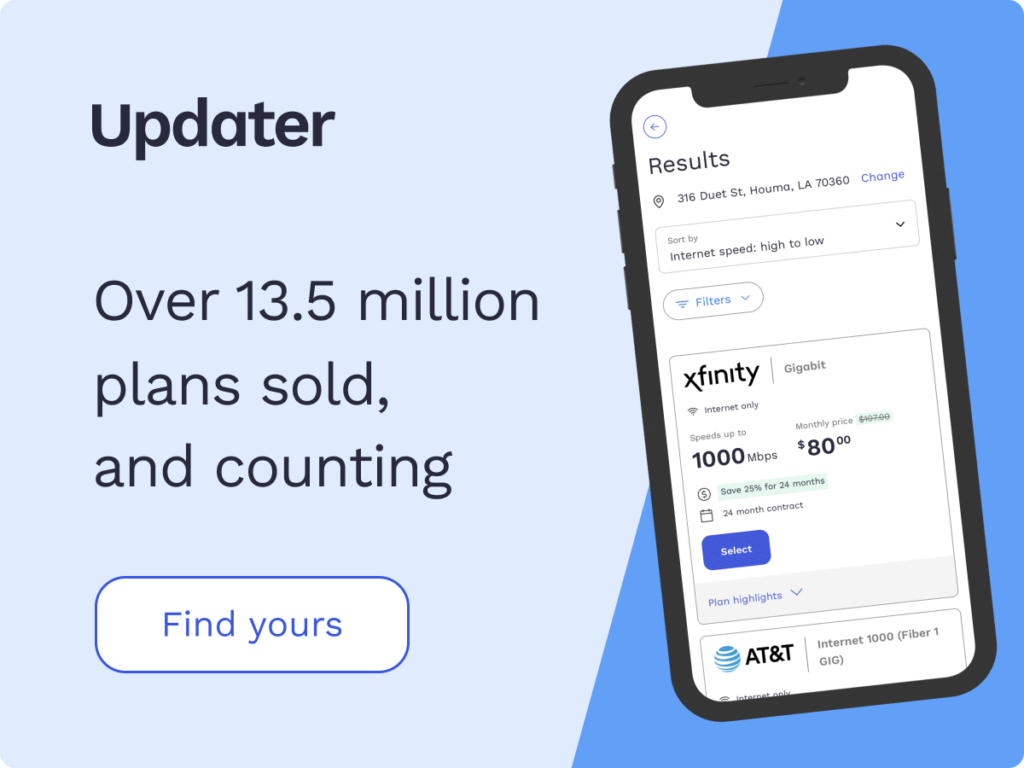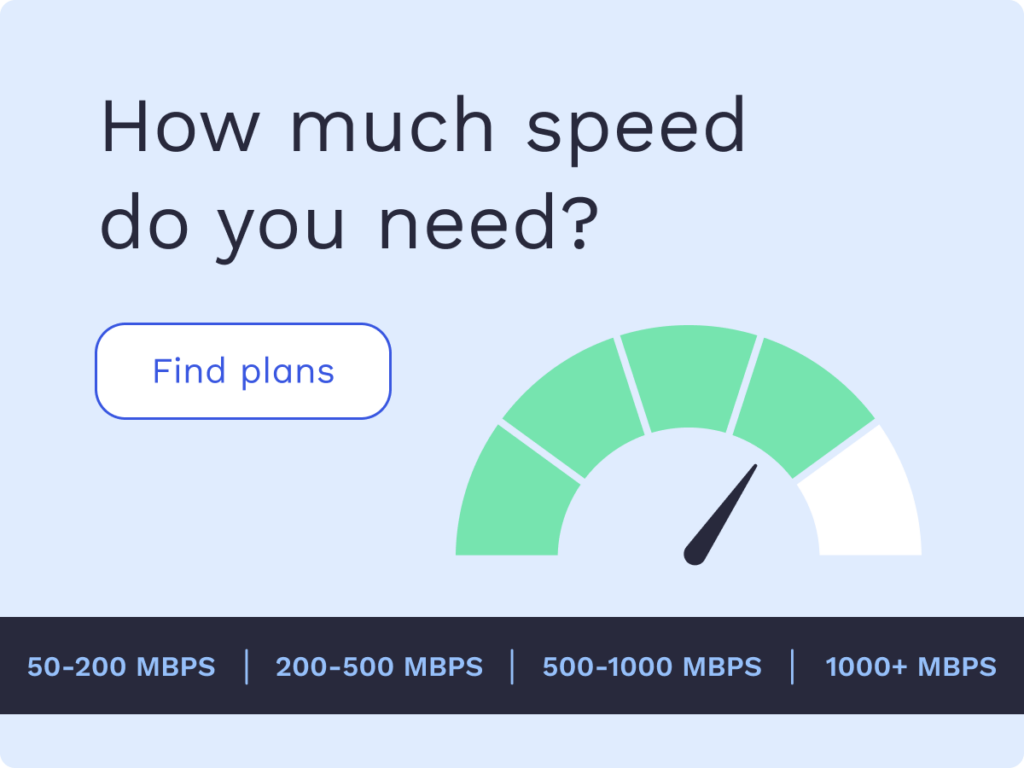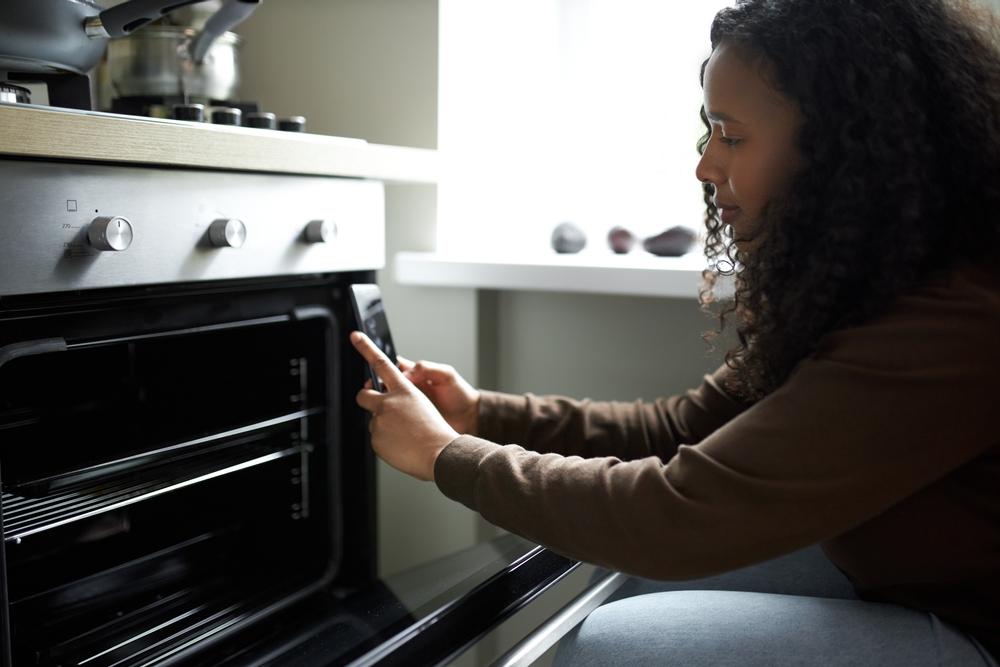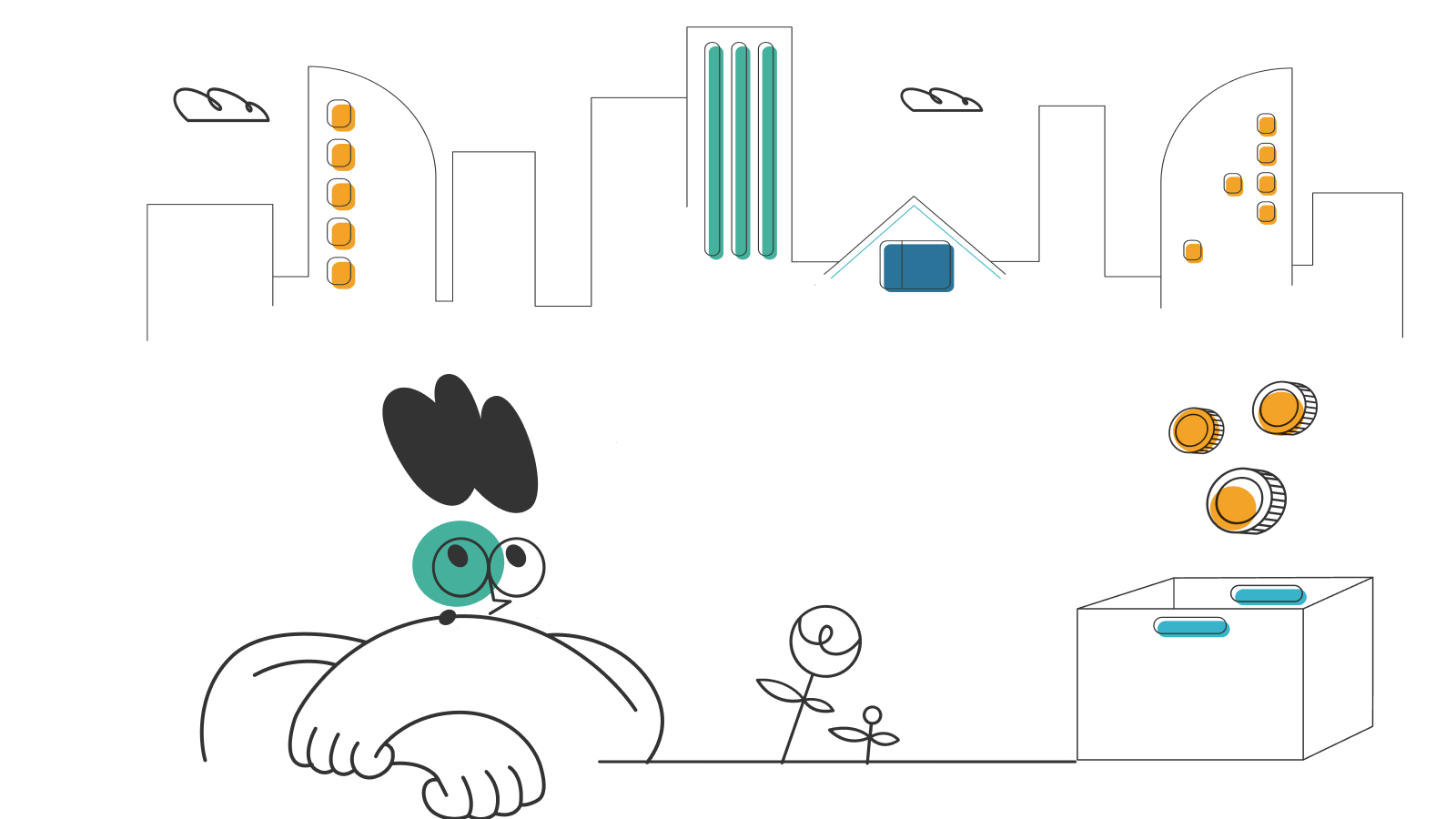DSL vs Cable Internet: What’s the Difference?

Reliable internet access has become a necessity in households across the US. With more people browsing, shopping, gaming, and working at home in recent years, the need for quality internet has accelerated. That trend doesn’t show signs of slowing down anytime soon.
If you’re exploring your internet options, two of the most common services provided by internet service providers (ISPs) are digital subscriber line (DSL) and cable internet. Both DSL and cable internet operate on existing infrastructure, which makes them widely available and highly reliable. However, each type of service has its pros and cons.
So how can you decide which is right for you? Knowing the facts and weighing the advantages and disadvantages can help you to decide which type of service, and potentially which ISP, to choose.
- What is DSL internet?
- Which ISPs provide DSL internet service?
- What is cable internet?
- Which ISPs provide cable internet service?
- Comparing DSL vs cable internet
- Frequently asked questions (FAQs)
What is DSL internet?
DSL is high-speed internet delivered via copper phone lines. In the United States, DSL is the primary service available in many rural areas since it can use existing phone lines without needing significant upgrades to infrastructure. DSL connections require a DSL modem unless you’re using a computer with a built-in voiceband modem.
In general, DSL speeds range from 1 to 6Mbps, but there are some providers that offer much higher speeds. DSL plans can be either symmetrical, meaning upload and download speeds are the same, or asymmetrical meaning download speed is greater than upload speed.
As an example of what asymmetrical means, an ISP may offer a plan with 6Mbps download speed, but only 3Mbps upload speed. That means that while a movie may take 30 minutes to download, it would take at least twice that time to upload. Or if you were on a video-conference call, you might receive the other party’s video clearly, but you might appear blurry or pixelated to the other party.
While DSL may not offer the fastest speeds around, it’s a reliable option in areas where internet choices may be limited. Plus, DLS pricing tends to be reasonable, and you may not encounter steep price increases over time. DSL depends on a firmly established infrastructure that guarantees its survival as an affordable, easily maintained internet delivery system.
Which ISPs provide DSL internet service?
The companies positioned to provide DSL internet service are often phone companies, because they already have the infrastructure in place. Some of the top DSL providers in the US are:
- AT&T – Coverage in 21 states
- CenturyLink – Coverage in 36 states
- Cincinnati Bell – Coverage in 8 states
- Consolidated Communications – Coverage in 21 states
- EarthLink – Coverage in 26 states
- TDS Telecom – Coverage in 27 states
- Verizon – Coverage in 11 states
- Windstream – Coverage in 51 states
The cost of a DSL internet connection ranges from about $30 to $80/month, depending on the provider and the plan.
What is cable internet?
Cable high-speed internet is a service provided through the coaxial cable used to provide cable TV to residences. Like DSL, it can use the infrastructure already put in place by TV cable companies. Today, cable is the most common service, available to almost 90% of the population in the US.
With top-end speed much faster than DSL, cable internet offers download speeds as high as 500Mbps. However, cable upload speeds max out far less—around 50Mbps. In fact, many cable ISPs, like Cox, Spectrum, and Xfinity, have max upload speeds of 30 or 35Mbps even for plans with gigabit download speeds. Therefore, generally speaking, cable internet connections are asymmetrical.
Some cable ISPs have recently begun offering super-fast internet plans at or near 1000Mbps. However, special modems are required to handle the gigabit data transfer speeds.
For many households, cable internet provides enough speed to accomplish everyday tasks and pursue some special interests, like online gaming or streaming movies. This technology is readily available in residential areas, and this indicates that cable internet is likely here to stay.
Often, companies that provide cable internet offer bundled plans that include TV and home phone. These bundles can be cost-effective if you’re looking to receive several services for a single provider.
Which ISPs provide cable internet service?
Many of the same ISPs that provide DSL also provide cable internet, but companies already providing cable TV are in the best position to leverage their infrastructure to provide cable internet service. Some of the companies offering the most cable internet coverage include:
- Xfinity – Coverage in 40 states
- Cox Communications – Coverage in 19 states
- Mediacom Cable – Coverage in 22 states
- Sparklight – Coverage in 21 states
- Spectrum – Coverage in 42 states
- Suddenlink Communications – Coverage in 17 states
- TDS Telecom – Coverage in 11 states
- Vyve Broadband – Coverage in 16 states
- Windstream – Coverage in 10 states
The typical cost of a cable internet connection ranges from about $30 to $125/month, depending on the provider and the plan.
Comparing DSL vs cable internet
Both DSL and cable are available to about 90% of the US population, just in different areas. If you’re looking for a new ISP, chances are that you’ll find both DSL and cable options available. Comparing the pros and cons of DSL vs. cable can help you see which type of service best suits your needs.
Pros for cable internet
- Speed – Cable internet offers faster, more reliable download speeds than DSL. This may be important to those who rely on ample bandwidth for video streaming, video-conferencing, or gaming.
- Reliability – Cable internet experiences less latency, or lag time, when multiple devices are connected.
- Flexibility – Cable internet plans can be bundled with your existing cable TV plan for affordability and flexibility.
Cons for cable internet
- Cost – In general, cable internet costs more than DSL, even when bundled.
- Dependability – Because cable internet relies on shared bandwidth, users will experience a loss of bandwidth during peak hours when there is heavy internet traffic. This loss of bandwidth can be as much as 20-40% of your connection speed.
- Affordability – While cable internet ISPs may offer introductory promotions and product bundling, generally their rate increases are higher than DSL ISPs.
Pros for DSL internet
- Affordability – DSL plans are generally more affordable than cable internet plans and rate increases following introductory offers are generally minimal. You may also be able to bundle your internet service with your telephone service.
- Dependability – While DSL speeds may be lower, DSL does not rely on shared bandwidth and is “always on.” Plans offering either symmetrical or asymmetrical connections give users the flexibility to meet their invidivual needs.
Cons for DSL internet
- Speed – DSL is usually, but not always, slower than cable internet. It depends, to some degree, on the plan chosen by the customer.
- Reliability – DSL connections experience signal loss the farther the connection is away from the central hub. Customers near the hub will have a stronger signal than those farther away. The maximum distance is 15,000 wire-feet.
If you need reliable streaming capabilities and ample bandwidth, then cable internet may be right for you. But if your work primarily involves emails, file sharing, and cloud service connections, and you’re looking to save a few dollars, DSL may be the better choice.
Both types of services may also employ speed and bandwidth caps in your area, so you’ll need to get all the details from local ISPs before deciding. Also, you’ll want to consider factors such as installation fees and monthly equipment rental fees to make sure you budget enough for internet service needs.
Frequently asked questions (FAQs)
What is cable high-speed internet?
Cable high-speed internet is internet service provided via the same coaxial cable that brings you cable TV. Generally speaking, the service is asymmetrical, meaning that the download and upload speeds are not equal. Typically, cable internet offers fast download speeds but lower upload speeds. Cable internet is fast and has a lot of bandwidth, so it’s a good option in areas where no fiber optic connections are available and users require ample bandwidth for streaming video, gaming, etc.
What is DSL internet?
DSL is high-speed internet access via copper phone lines. It uses the existing infrastructure of phone companies and therefore is a commonly available option in rural areas. DSL connections can be either symmetrical or asymmetrical, depending on the ISP.
Which internet connection is faster—cable or DSL?
There are ISPs that offer cable internet speeds of up to 1000Mbps. On the other hand, the fastest DSL speeds offered by ISPs max out at around 100Mbps.
That doesn’t necessarily mean that cable is always faster than DSL, because it depends on the plan you purchase. You should explore what ISPs in your area have to offer, and if speed is what you’re after, you can select the plan that provides you with the highest speed.
What are the differences between cable internet and DSL?
Cable internet arrives at your home through the copper coaxial cables used to provide you with cable TV. DSL is provided via standard copper phone lines wired to your home. Cable generally offers more bandwidth, especially when it comes to download speeds. DSL may be more readily available in less populated, rural areas, and generally costs less.
Is cable internet more reliable than DSL?
Both technologies are very reliable. While they may differ in speed, they are more equal when it comes to availability and reliability. Both are delivered using copper lines and pre-existing infrastructure.
Is cable internet available in remote areas?
Cable is available to almost 90% of the population in the US. However, if you’re looking for an ISP that provides connections in a very remote location, DSL may be more available.
Which is better for gaming—cable or DSL?
Cable internet has less latency—or lag time—when multiple devices are connected. A recent Federal Communications Commission (FCC) report shows that DSL has a higher lag time than cable. Online gamers would likely find delays associated with a DSL connection frustrating and would probably prefer the speeds and bandwidth offered by cable ISPs.
Is DSL high-speed internet?
Yes, in most cases DSL meets the FCC criteria for high-speed internet. High-speed, broadband internet, as defined by The FCC is an internet connection that delivers 25Mbps of download speed or more. While some DSL plans can offer speeds as low as .5Mbps, many ISPs offer DSL plans that deliver speeds of 25Mbps or higher and DSL plans usually max out at about 100Mbps.
Is DSL the same as dial-up?
No. While both are generally provided by telephone companies via phone lines, DSL is almost 200 times faster than dial-up or more. Dial-up speeds max out at about 56Kbps, but even the slowest DSL connection is about 10,000–20,000Kbps (10-20Mbps). And there are ISPs that offer plans with DSL speeds of up to 100Mbps.
What kind of equipment does DSL require?
Your ISP will likely provide you with a DSL modem, or more likely a modem/router combo, to connect your computer to and provide a Wi-Fi signal for mobile devices.
What kind of equipment does cable internet require?
Your ISP will likely provide you with a cable modem, or more likely a modem/router combo, to connect your computer to and provide a Wi-Fi signal for mobile devices.
Which is better for households with multiple users—cable or DSL?
Depending on your household size, you may be able to get adequate speeds from either DSL or cable. A 100Mbps plan can usually support homes with three or four people streaming, gaming, or engaging in video calls simultaneously.
Of course, the bigger your household, the more speed you’ll need. If five or more people in your home use the internet regularly, you may need to consider a higher-speed cable plan of 200Mbps or more.
Is a symmetrical or asymmetrical connection better?
The answer to this question depends on how you use the internet. For example, for families whose usage is mainly downloading, receiving messages and emails, downloading music and movies, and streaming programs, asymmetrical plans are generally sufficient.
However, for users who also expect to have heavy upload traffic, perhaps video-conferencing, file-sharing, and connecting to cloud services due to work or school requirements, upload speed is just as important as download speed. In those scenarios, a symmetrical connection may be preferable.
*Pricing varies by location and availability. Speeds may vary. All prices subject to change; for current pricing and availability visit our internet service page. Prices as of 3/27/22.
Disclosure | Updater articles are based on our own data and research, independent from partner relationships. We are not compensated by partners for information and opinions presented here. Our Editorial Terms of Service can be found here.














